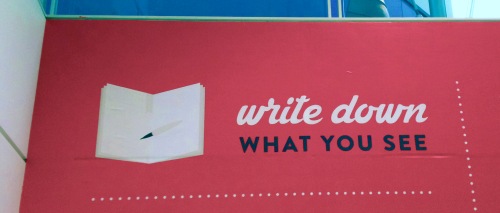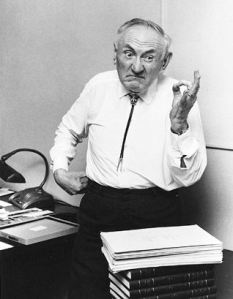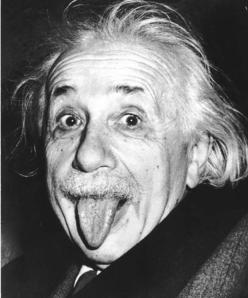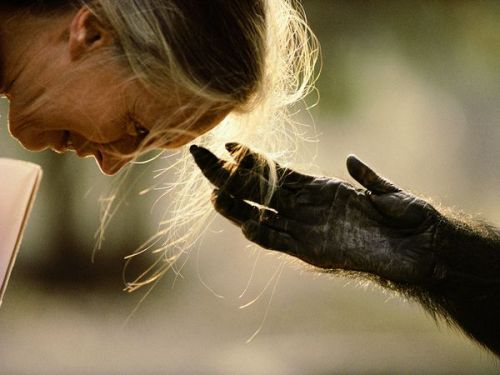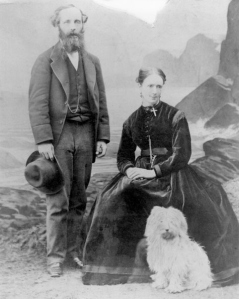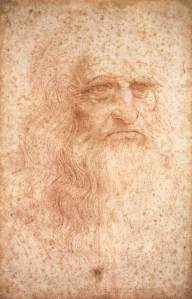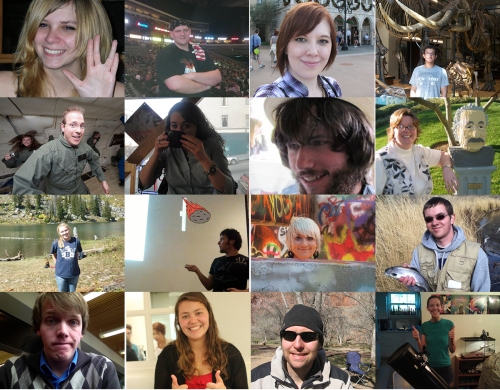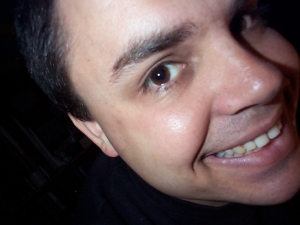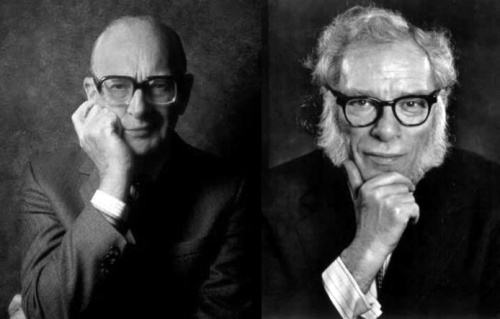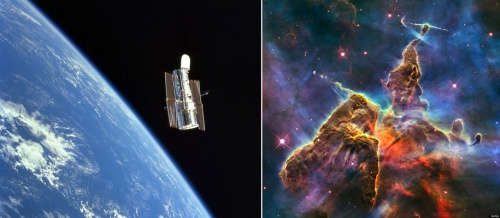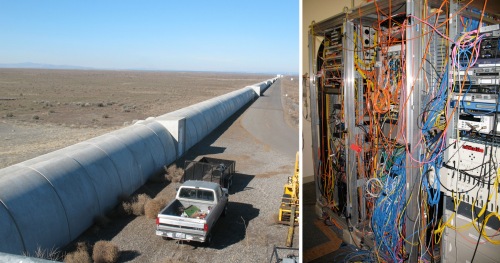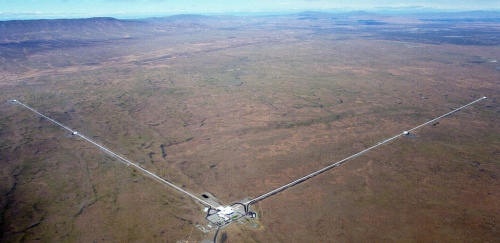by Shane L. Larson
Have you ever had an awesome thought, maybe on your commute to work, standing in line at the grocery store, or waiting for your kids to get out of ballet? Did you say to yourself, “I’ve got to remember that! I should write that down.” Then fast-forward to later that day, and you can’t remember what your brilliant thought was?
Our thoughts are ephemeral things; they come and go like the morning dew. Committing them to long term memory requires concerted effort, which if neglected, sees the thoughts evaporate away, lost forever. Fortunately, humans have invented a device to preserve our fleeting meanderings of mind: paper.
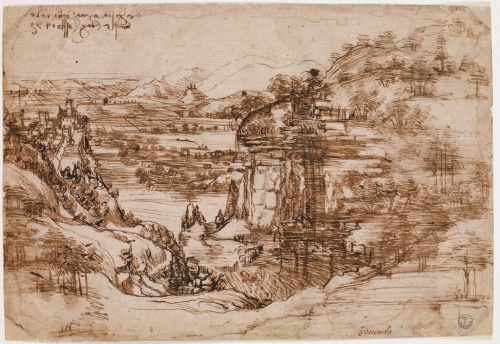
“Study of a Tuscan Landscape.” This sketch of the Arno Valley is the oldest known work of art by Leonardo da Vinci. [Image: Wikimedia Commons]
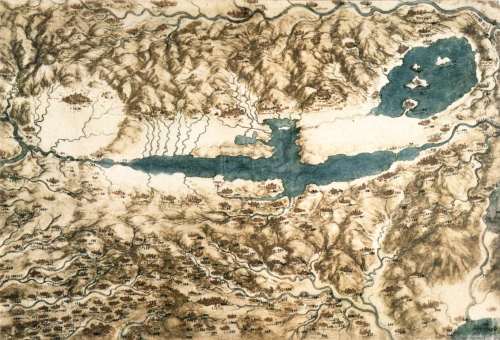
“Birdseye View of a Landscape.” Leonardo da Vinci’s imagining of what a bird might see, if flying over the Italian countryside. [Image: Wikimedia Commons[
![Modern, spacecraft view of the Galilean moons, which were only dots to Galileo. Top to bottom: Io, Europa, Ganymede, Callisto. [Image: Wikimedia Commons]](https://writescience.files.wordpress.com/2016/03/jupiter_and_the_galilean_satellites.jpg?w=210&h=300)
Modern, spacecraft view of the Galilean moons, which were only dots to Galileo. Top to bottom: Io, Europa, Ganymede, Callisto. [Image: Wikimedia Commons]
![Galileo's notes from 1611, from observations attempting to determine the orbital period of the moons of Jupiter, written on the back of an envelope! [Image: Morgan Library]](https://writescience.files.wordpress.com/2016/03/galilei-satc3a9lites-de-jc3bapiter1.jpg?w=270&h=382)
Galileo’s notes from 1611, from observations attempting to determine the orbital period of the moons of Jupiter, written on the back of an envelope! [Image: Morgan Library]
Though-out history, paper has been the medium by which we preserve knowledge. It has evolved into a fine art-form in the production of books, which harbor the collective memory of our species. But the mass production and archiving of knowledge on paper in libraries, universities, and bookstores has a much more personal face at the level of individual people: their notebooks.
Notebooks are, quite often, as personal to people as the shoes or t-shirts they choose to wear. Some people swear by spiral bound notebooks (often adorned with pictures of kittens or flaming electric guitars) that you remember from grade school; others have moved on to composition books. Artists often have sketchbooks or watercolor books. Others swear by cahiers of the Moleskine style, or by tiny pocket notebooks they can keep in their pocket next to their smartphone.
![A collection of notebooks from around the Larson household. This is only a small sample -- I didn't even have to try that hard to find them! [Image: S. Larson]](https://writescience.files.wordpress.com/2016/03/img_4465.jpg?w=500&h=335)
A collection of notebooks from around the Larson household — every person has their own personal preferences. This is only a small sample — I didn’t even have to try that hard to find them! [Image: S. Larson]
![My astronomy observing notebooks are my constant diary of the dialog between me and the night sky. [Image: S. Larson]](https://writescience.files.wordpress.com/2016/03/observinglogs.jpg?w=500&h=380)
My astronomy observing notebooks are my constant diary of the dialog between me and the night sky. [Image: S. Larson]
![My idea journal is my constant companion, no matter where I go. Here it is on the rim of Upheval Dome, an impact crater in Canyonlands National Park. [Image: S. Larson]](https://writescience.files.wordpress.com/2016/03/img_2633.jpg?w=500&h=333)
My idea journal is my constant companion, no matter where I go. Here it is on the rim of Upheaval Dome, an impact crater in Canyonlands National Park. [Image: S. Larson]
The #AdlerWall implores you to write down what you see — so you can remember, and so you can relate your experiences to someone else, even if that someone is only a future version of yourself. Try slipping a small notebook in your pocket, and make little jots down in it as you explore the suggestions on the #AdlerWall.
But be warned: sometimes, when faced with a new, empty notebook, with pristine pages unsullied by pen or pencil, it is hard to write that first thing. This is Fear of Ruining the Notebook. Not everyone suffers this phobia, but I have it in spades, as do many others. So to combat it, I have developed a strategy: I have a standard ritual I start with every notebook, initially marking and adorning some pages. This uniquely identifies every notebook as mine, and it gets me past those first panicky moments when faced with pure, blank pages. The ritual goes like this:
- Inside the front, on the leaf connected to the front end-page, I write my name and email address — there is often a place for this.
- On the bottom of that page, I usually put a sticker of… something. NASA missions, national park stickers, anything I happen to have.
- On the inside end paper, along the seam, I write my name in black sharpie, as well as a glyph I made up in my youth to mean “me”
- On the other side of the end leaf, facing the first true page of the notebook, I put a portrait painting of Carl Sagan, with the opening paragraph of Cosmos.
- On the first page of the notebook, I write some kind of stylized intro graphic that says, “New Moleskine.”
I don’t know WHY I do all these things; I probably don’t need to do them all, but I do. If I were superstitious, I would say it would be bad luck to NOT do these things. But irrespective, it breaks in the new notebook and I can start using it!
![Typical first pages in all my idea notebooks -- part of my ritual to get over Fear of Ruining the Notebook. [Image: S. Larson]](https://writescience.files.wordpress.com/2016/03/img_4466.jpg?w=500&h=366)
Typical first pages in all my idea notebooks — part of my ritual to get over Fear of Ruining the Notebook. [Image: S. Larson]
But you may find something comforting and liberating in using paper to record your journey. Anything can work, as Galileo’s unfolded envelope shows. But just in case you think its too embarrassing to show people your bird sketch on the back of a lunch napkin, or you’re afraid you’ll lose the sunrise inspired haiku you wrote on the back of a coffee shop receipt, maybe a little pocket notebook is a good starting point — something smaller than your phone, that you can always have on hand in your purse or back pocket.
It doesn’t matter what you do; just that you do it.
See you out in the world — I’m the guy sitting on the curbside, making rubbings of leaves I found on the sidewalk. In my notebook. 🙂
—————————————-
This post is part of an ongoing series about the #AdlerWall. I encourage you to follow along with the activities, and post your adventures, questions and discoveries on social media using the hashtag #AdlerWall. Links to the entire series are here at the first post of the #AdlerWall Series.

